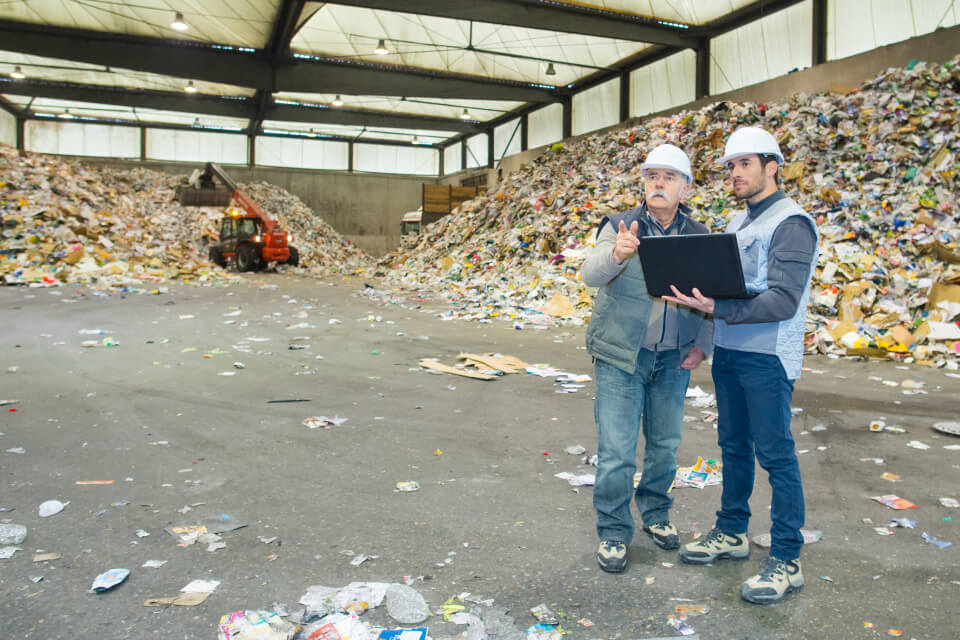The financial and operational costs of scrap waste in manufacturing are substantial. In 2018, the United States generated approximately 292.4 million tons of municipal solid waste, with a significant portion originating from manufacturing processes. Managing this waste incurs billions of dollars in disposal fees and represents a loss of valuable materials that could have been repurposed.
The time and labor dedicated to sorting and disposing of scrap divert resources from productive activities, leading to inefficiencies.
Every frontline worker plays a pivotal role in shaping the fate of scrap materials. Whether it's identifying reusable offcuts, properly sorting waste, or adhering to efficient production techniques, the actions of each team member directly impact the amount of material wasted.
Education on scrap—knowing what can be recycled, what is truly waste, and how to minimize scrap generation—is not just a top-down initiative; it must be a shared responsibility embedded in every step of the production process. By empowering workers with knowledge, manufacturers can not only reduce costs but also move closer to their sustainability goals.
Scrap is an inevitable part of manufacturing, but its proper management is critical to reducing waste and improving efficiency. To tackle scrap effectively, it’s essential to understand its different forms, what can be reused, and what ends up as true waste.

In manufacturing, "scrap" refers to leftover materials generated during production processes. These materials can come from machining, assembly, or product end-of-life. While some of it can be recycled or reused, other portions are destined for disposal. Managing scrap isn’t just about cost—it’s about sustainability, resource efficiency, and environmental responsibility.
Effectively managing scrap begins with understanding its types and their potential for reuse. This knowledge is not just for management—it is critical for the frontline workforce, who directly handle materials and influence scrap outcomes during production. By equipping frontline workers with the ability to identify, sort, and manage scrap effectively, manufacturers can reduce waste, lower costs, and enhance sustainability. Here's a closer look at the types of scrap commonly encountered in manufacturing:
1. Prompt Scrap: Materials generated directly from production processes, such as offcuts, trimmings, or defective parts.
2. Obsolete Scrap: Scrap from end-of-life products like decommissioned machinery, vehicles, or appliances.
3. Contaminated Scrap: Materials mixed with hazardous substances or chemicals, making them difficult or unsafe to recycle.
4. Composite Material Scrap: Products made of mixed materials that are challenging to separate, such as multi-layered packaging or fiber-reinforced plastics.
5. Degraded Scrap: Materials that have lost structural integrity or quality after multiple cycles of use or recycling.

Effectively managing scrap in manufacturing starts with a clear understanding of what is reusable versus what constitutes true waste. This distinction not only helps manufacturers reduce their environmental footprint but also enhances resource efficiency, cost savings, and overall sustainability. At the heart of this effort lies the frontline workforce, whose hands-on involvement is critical to identifying and handling scrap correctly.
Reusable scrap includes materials that retain value and can be reintegrated into production or recycled for new applications. These materials are the key to reducing waste and maximizing efficiency:
Educating frontline workers to recognize reusable materials ensures these valuable resources are properly identified and redirected back into the production process or recycling stream.

True waste scrap represents materials that are either impractical or too costly to reuse or recycle. These pose significant challenges for waste management:
Training frontline workers to properly identify true waste and manage it responsibly helps minimize environmental impact and prevent contamination of recyclable streams.
The distinction between reusable and true waste scrap is not only a technical challenge but also a frontline responsibility. Workers on the factory floor have a unique vantage point—they see scrap being generated in real-time and are instrumental in its sorting and handling.
By empowering frontline employees with the knowledge to differentiate between reusable and waste scrap, manufacturers can:

Effective scrap management begins on the factory floor, where decisions and actions in real-time can significantly impact waste levels. This is where DeepHow plays a critical role. By leveraging an AI-powered video companion while they work, DeepHow ensures frontline workers are equipped with the expertise to minimize errors, optimize material use, and identify opportunities for reducing scrap at every step of the process.
Whether it's through capturing tribal knowledge, standardizing procedures, or enhancing team collaboration, DeepHow empowers workers to execute tasks with precision and confidence. This translates to fewer production errors, better material utilization, and less waste overall.
Moreover, DeepHow’s multimodal Standard Operating Procedures (SOPs) provide clear, actionable guidance tailored to specific roles and scenarios and in a variety of formats to meet a range of learning needs. By bridging knowledge gaps and fostering a culture of continuous improvement, DeepHow helps manufacturers move closer to achieving their zero-waste goals.
Scrap in manufacturing, whether reusable or waste, represents both a challenge and an opportunity. By understanding its types, origins, and impact, manufacturers can implement targeted strategies to reduce waste and optimize processes. The key lies in empowering the workforce with the tools and training needed to make informed decisions at every stage of production.
DeepHow’s innovative approach to frontline training and knowledge management positions manufacturers to not only reduce scrap but also improve operational excellence and sustainability. Together, we can turn scrap management from a cost center into a cornerstone of a greener, more efficient future.


Start capturing, structuring, and activating your expert
knowledge today with a 14-day unlimited free trial.